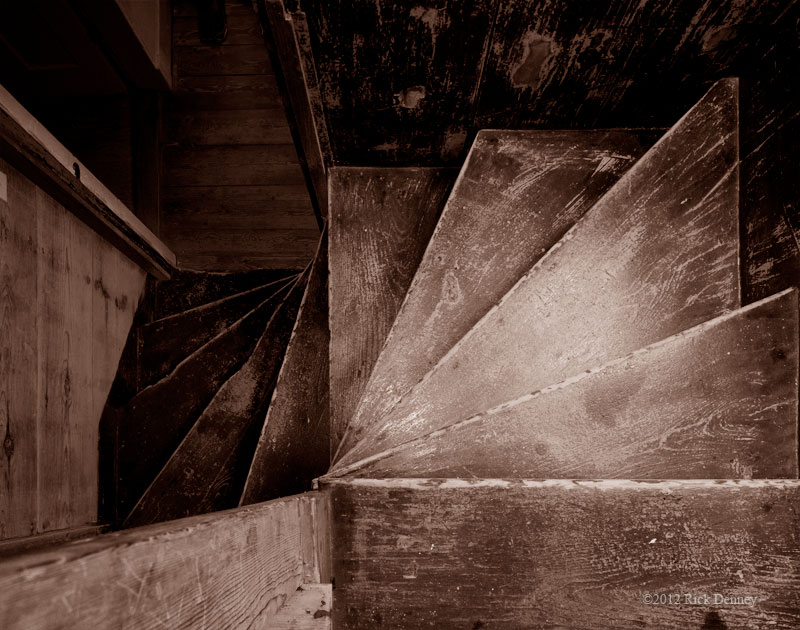I can't go with you here. Depth of field is based on apparent sharpness from stem to stern. Nothing is the full sharpness of the lens outside the focus plane. If you enlarge enough, the depth of field will diminish right down to the diffraction limit. Even when diffraction is significant, it affects all parts of the image, in and out of the focus plane. Depth of field is, by definition, that which appears to be in focus, but is NOT in the focus plane.
The enlargement ratio is a critical element in what appears to be in focus. Stuff that looks tack-sharp in a contact print can start to get soft (on close inspection) when enlarged even 2X or 4X.
More generally:
I have always agreed with the point that diffraction is a fine effect while depth of field is a coarse effect. But just because it's a coarse effect does not mean it is a sudden effect. The acutance/resolution/whatever of the image will degrade smoothly as one moves away from the focus plane. At some point, that degradation becomes visible. That's the point where depth of field breaks down.
This is easy to see at very high magnifications. Even when I scan stuff at 2400 on my Epson flatbed, I can approximately see and estimate the boundaries of depth of field for specific enlargement ratios up to very large prints. When the image is displayed pixel-for-pixel, each square inch of negative requires about two feet square of monitor--24x enlargement. A 4x5 negative is therefore enlarged to eight feet by ten, though we only see the portion that fits on the monitor. It is easy to see many effects at that scale, including the limitations of the scanner. But those limitations happen at the pixel level. Even with that pixel-level fuzziness, I can see when depth of field starts to drop off even when well within the standard of sharpness for a 4x enlargement. When I display the image on the monitor at a 12x enlargement, and then back up to three times the viewing distance I am targeting, I get only a sense of the sharpness of the print at 4x. Stuff that is fuzzy at 100% crisps up very nicely--it moves within the depth of field allowed for that print size. At that level, diffraction never has a visible effect on large-format images in my experience.
I do evaluate depth of field using a 10x loupe on the ground glass at taking aperture (at least when it is in question), but I usually stop down a stop or two beyond what seems sharp using the loupe. For 4x enlargements, this has never failed me.
Here's an example. I used a bit of left swing to get the mouth of the pumps and also the handle into the focus plane. The near surfaces of the pump body is visibly unsharp in comparison to the focus plane, when viewed at high magnification. In the context of the image, it does not matter, and in a way it helps give the pump some dimension. I wanted the background to be unfocused enough to allow the pump to really stand out, so that was the compromise that had to be made. The point is that at the size below, the depth of field apparently includes the near surface of the pump body. On a 4x enlargement, it also looks pretty sharp. But at 24x in my monitor, the difference is obvious. This is at f/16.
For the photo of the staircase below, I wanted everything sharp, though I realized that the vertical post was only inches from the rail of the (pointed-down) camera and would become unfocused no matter what. That I didn't mind at all. But I wanted every step to be sharp all the way down the staircase. Movements were complicated to make that happen. But even with the 90mm lens, I used f/45 without a backward glance. Diffraction is obviously invisible at this scale. But it's mostly invisible looking at this image at 100% on the monitor, too, which is that 24x enlargement--it's too small an effect to distinguish it from the general pixel-level fuzziness of the flatbed scanner. At 4x on a print, it's sharp as a tack.
What do I learn from these images? One should never worry about diffraction if scanning the image on a flatbed. Period. I also reinforce my belief that we stop down, and then stop down some more (especially for static subjects like a parking garage) because diffraction is unlikely to undermine the effect of endless detail like being well outside the depth of field will.
Rick "stop it down" Denney






 Reply With Quote
Reply With Quote
Bookmarks